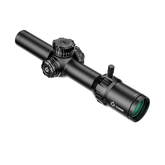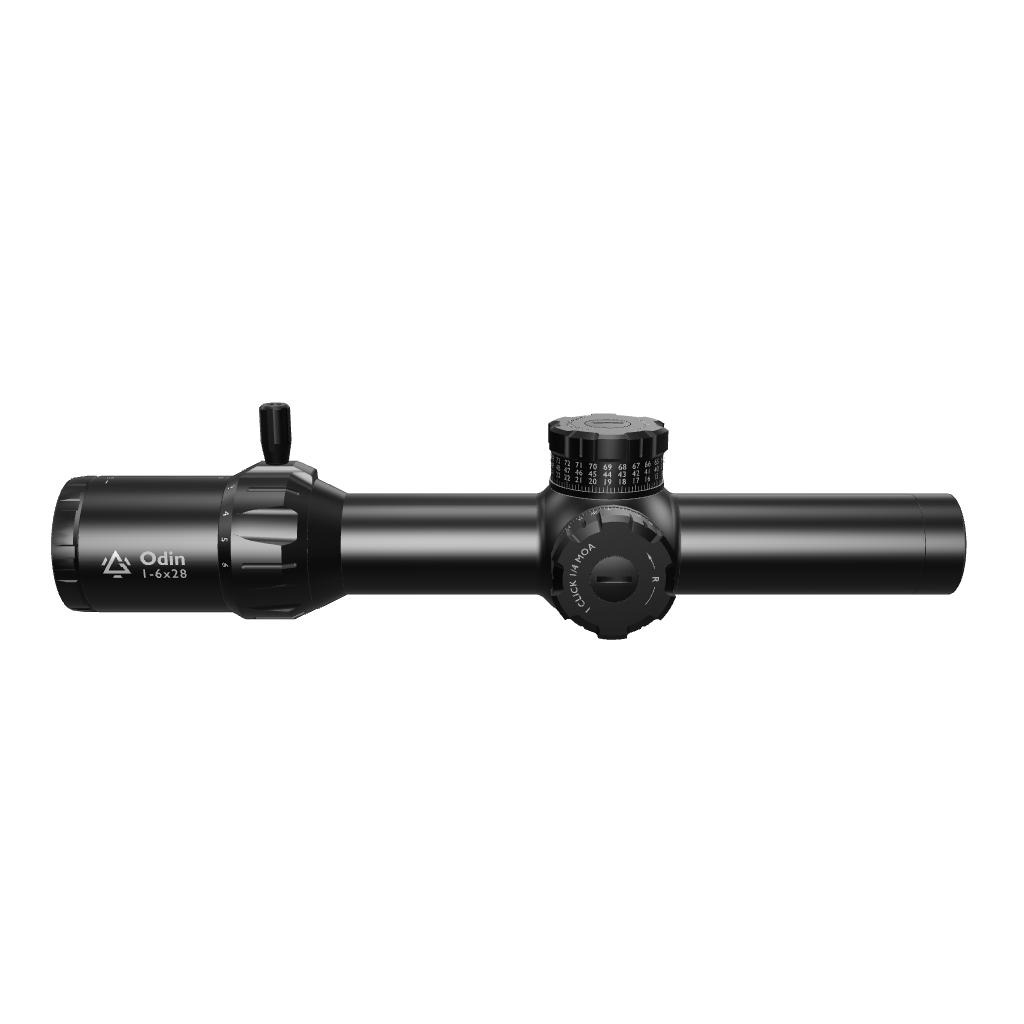How to Choose the Best LPVO Optic for Your Rifle
At the end of the day, choosing the best LPVO optic for your rifle has more to do with you ( the shooter) than the quality and quantity of optics available. There are many different kinds of LPVOs out there with different features that may all spark your interest and attention. So, how do you choose the one? Here’s a tip: consider what you want at the moment, but also recognize that your shooting preferences might change in the future.
Here are seven factors to consider when choosing an LPVO for your rifle.
1. Identify Your Purpose
Before selecting an LPVO, consider how and where you’ll use your rifle. Not every LPVO is suited for all purposes. You want one that has the tactical features to match the shooting demands in your field of specialty, as well as the durability to withstand the weather conditions that might be particular to your field.
- For hunting, look for an optic that is lightweight, offers a wide enough field of view, and is durable in construction.
- For tactical or defensive use, prioritize fast target acquisition, illuminated reticles and also durability.
- If you are into competitive shooting, go for an LPVO with higher glass quality, an advanced reticle, and solid, firm, and precise turrets.
2. Choose the Right Magnification Range
What makes LPVOs so desirable is that they offer variety in magnification range. Different LPVOs have different magnification capabilities, typically ranging from 1x to 6x, 8x, or even 10x magnification.
- 1-6x is perfect for close to medium ranges. They are often lightweight and compact.
- 1-8x or 1-10x: Offers greater versatility and better over 100 yards
Why Magnification Matters
Several shooters started out primarily shooting short-range but gradually got better and decided to challenge themselves over longer distances. Some went in the opposite direction. Nobody stays the same forever, and that is true for shooting as well.
With variable magnification, you can adapt to new shooting preferences without incurring extra costs. This is part of the reason why proactive buyers go for LPVOs.
Also, there is something to be said about the ability to switch between different levels of magnification without losing accuracy.

Magnification: FFP vs SFP Reticle
There are several factors to consider when choosing between FFP and SFP LPVOs, but as far as magnification goes, FFP scopes provide consistency and precision for long-range and dynamic shooting scenarios, while SFP scopes offer simplicity and familiarity for close to mid-range engagements.
3. Assess Optical Clarity and Glass Quality
To most people, optical clarity is the most important quality in an LPVO, and there is a good reason for that. Crystal-clear optics take in more light and enhance accuracy, especially in low-light conditions. It is always advisable to check the quality of glass on your LPVO before making your purchase. Here’s how to know if a scope has good glass
It has fully multi-coated lenses to reduce glare and improve light transmission.
There’s no distortion around the edges.
Example of Good Glass
German Schott ED glass ranks high as one of the best glasses for LPVOs. This company has been producing glass since, and with each passing decade, they have honed their skills and adapted better technology to produce superior, top-grade glass for rifle optics and other appliances. Here are four reasons why modern brands like Gogunnr are all going for German glass.

4. Evaluate The Reticle Options
It is hard to say which reticle is better because reticles come in different designs and fit different shooting styles. The most popular designs are simple crosshair reticles, Bullet Drop Compensation Reticles, Tree Reticles, and Illuminated reticle designs.
- Simple Crosshairs are ideal if you shoot close-quarters and value quick target acquisition.
- BDC (Bullet Drop Compensator) is preferable if you want long-range precision.
- Illuminated Reticles are essential for low-light or nighttime use.
5. Check Durability and Build Quality
Always go for an LPVO that is ruggedly and solidly built, especially if you are involved in hunting or tactical operations where you will likely be shooting in rough conditions or bad weather.
- A good waterproof/fogproof rating is essential for harsh weather
- Shockproof construction also means your rifle would be able to handle heavy recoil.
- Aircraft-grade aluminum ensures strength without excessive weight.
6. Understand Adjustment Systems
Objectively speaking, some turrets are better than others. If you hope to achieve any measure of accuracy, you must know how to identify high-quality turrets. Mastering the turrets of your optic is absolutely vital. Here are two indicators that the turrets on an optic are good.
- The adjustments are precise and tactile.
- They have a zero-stop function.

7. Set a Budget
There are LPVOs for almost any price range. The Leupold Mark 8 CQBSS costs about $4,000, but many models cost less than $100. When buying an LPVO, the best approach is to make a budget and get the best model within your price range.
- Budget-Friendly ($300-$500): Suitable for beginners or casual shooters.
- Mid-Range ($500-$1,200): Offers excellent quality for most users.
- High-End ($1,200+): Top-tier optics for professional and competitive use.
Here’s an Affordable Brand
There are not many LPVO brands that strike a balance between providing the best quality, key features, and affordability. Gogunnr is one of those few. The company was recently launched in 2024, and its LPVOs provide some of the best features for a low price range. Here are some key features of the Odin LPVO line, which was recently launched by Gogunnr.
ODIN LPVOs From Gogunnr
Odin optics come in three models: the Odin 1-6x 28, Odin 1-8x 24 LPVO, and the Odin 1-10x 28 LPVO. Each of these models can pair exceptionally well with your AR-15 because of their versatile features and the design, which is deliberately compatible with the modularity of most ARs.

The first reason you want an Odin LPVO for your riffle is that you can easily find a model that is the best match for its versatility. The three Odin scopes offer every possible magnification range within the capabilities of an LPVO. You have ranges like 1-6x or 1-8x, which are ideal for most rifles’ effective range of 100 to 300 yards.
Main Features
- Gogunnr’s Odin scopes are engineered to complement the ballistic profile of the AR-15. AR-15 rifles, for example, are commonly chambered in .223/5.56 NATO, which is probably the closest you can get to perfect accuracy, especially over medium range.
- With any of Gogunnrs Odin scopes, you will have zero difficulty mounting your optic or swapping rifles. Most rifles come with Picatinny rails, which are directly compatible with the cantilever mount that comes with Gunnr Odin scopes. This eliminates the need for additional adapters.
- Gogunnr Odin scopes feature Bullet Drop Compensation (BDC) reticles, which account for the predictable trajectory of .223/5.56 rounds. Pair this with your AR-15 or most other ARs, and you can compensate for bullet-drop at varying distances without even adjusting the scope's elevation turret.
- Gunnr’s Odin optics generally weigh about (about 4.8×1.65×2.44 inches in size), making them lightweight and maneuverable.
- The exterior of each Gogunnrs Odin scope is made of 7075 aluminum alloy, the same hard material used for aircraft fittings and other aerospace and defense applications.
- These optics withstand recoil and maintain zero even after extended use. They are all tested to withstand 1,000 impacts at 1,000G and 2,000 live-fire rounds.
- They are also waterproof and fogproof. They are built to withstand temperatures from -59°F to 149°F and have an IP67 waterproofing rating.
Conclusion
For a more detailed analysis of each optic, refer to some guidelines on deciding which LPVO best suits your needs. For more clarification, check out the official introduction to the Odin 1-10x 28 LPVO. Gogunnr also provides useful information on how to mount the optic and set the best zero, as well as other amazing safety tips for using your LPVO.







